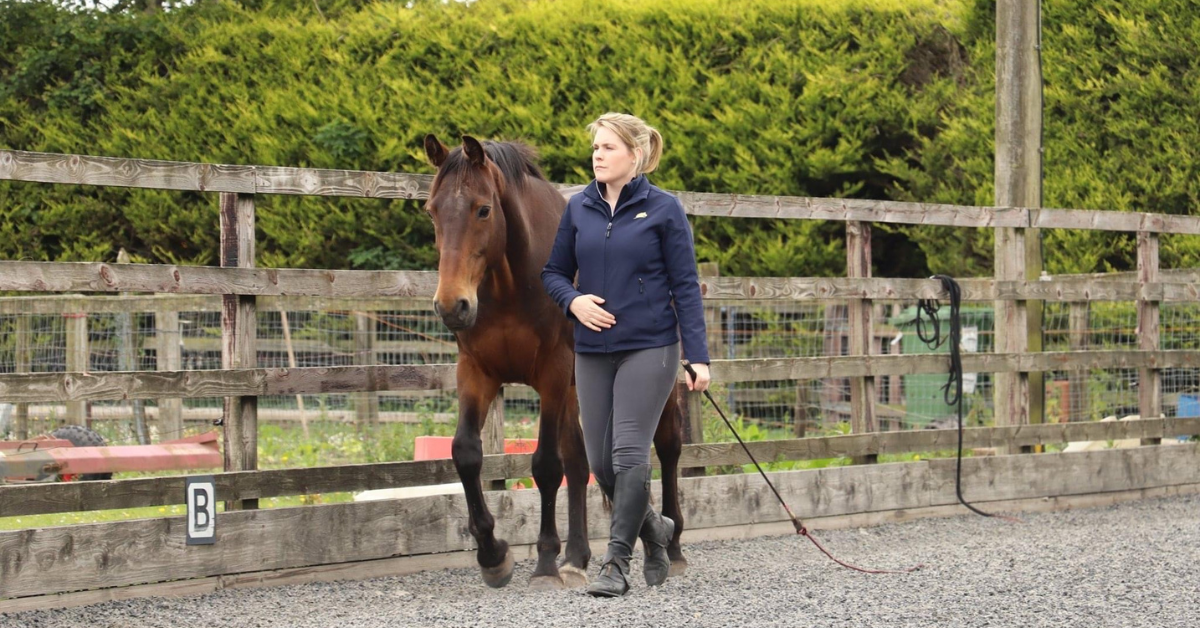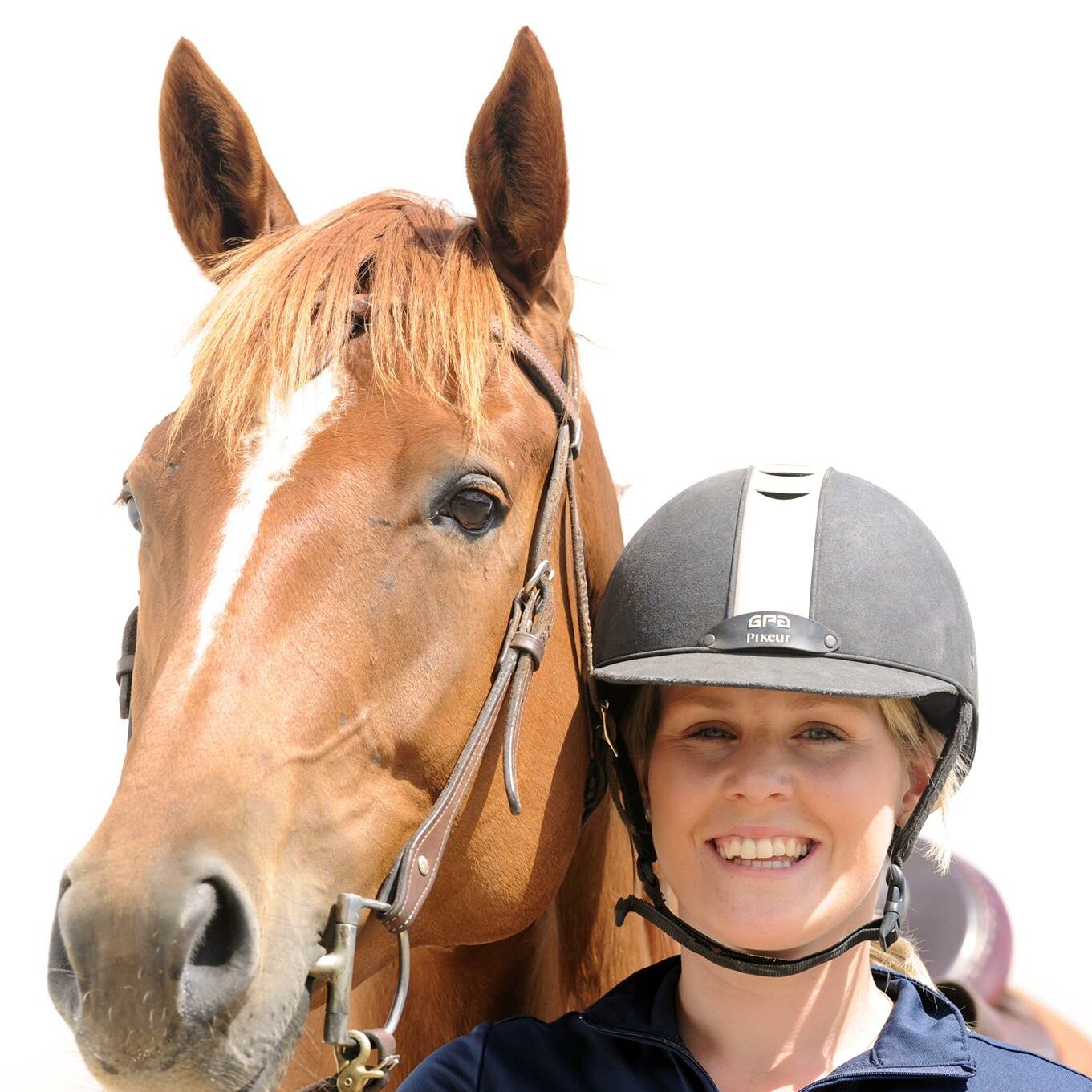Much like human confidence equine confidence can take many shapes and appearances. To truly develop a confident horse, we need to be operating with them in a state of partnership. We hear the term partnership a lot, but what does that actually mean to you? This can be really worth thinking about, as it will mean something slightly different to each individual.
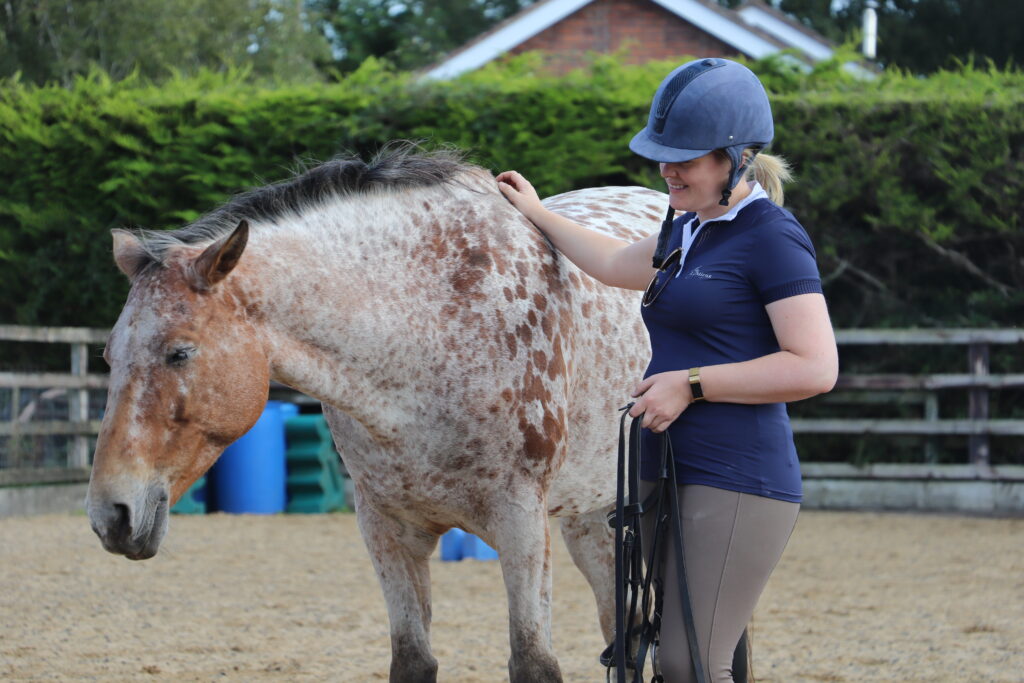
You can follow Helen on Instagram @Helenohanloncoaching.
To me a partnership is a relationship where both parties have a say, their opinions may differ, but none the less an opinion is allowed to be expressed, without fear of retribution or reprisal.
My formula for developing confidence in the horse and remaining in a state of partnership can be encompassed by the following headings;
- Predictability
- Time
- Choice
These three headings can in some way encompass so many of the interactions with our horses that either grow, erode or stagnate confidence.
Predictability
Regardless of whether you are a horse or a human you need to feel safe as a learner if high quality learning is to take place. Feelings of safety encompass both physical and psychological safety.
A huge component of safety is connected with predictability and a consistent approach.
Predictability is beneficial for growing confidence and this can be achieved through the sequencing of events, the physical environment and also the energy and body language of the handler. My head tutor at university when I was studying teaching reminded us almost every day that it was our job to move our students from the ‘known to the unknown’ as seamlessly as possible, if you are setting up your teaching point successfully your student whether it is a horse or human should barely notice the stretch required of them. They should be learning and developing their confidence without even noticing, this is when we have mastered the art of successful teaching & training. Our horses can know and understand lots of things, but ultimately how they feel about it is what develops or erodes their confidence.
This approach is underpinned by the work of Russian psychologist and educationalist Lev Vgotsky and his study of the Zone of Proximal Development (ZPD), also referred to as scaffolding theory. Vgotsky’s theory is underpinned by the notion of stretching learners just enough to create activation of learning, but not so much that it creates feelings of fear, overwhelm or that it diminishes learner confidence. When this approach to learning is repeated over time learners grow in confidence. When we structure our sessions with a gentle stretch of learning in mind, our horses can enjoy and flourish within the learning process.
Within Vgotsky’s model the learner is guided through their learning experience by a more knowledgeable learner. This throws up some challenges for us as equestrians as we may be trying to learn something alongside our horse, in these circumstances it can be useful to be under the supervision of an instructor, practice the task with a horse that knows it well or simulate the task away from the horse. When we scaffold and sequence, our horse’s learning in a developmentally appropriate way it reduces incidence of trauma and problematic behaviours, as well as developing confidence.
When we become a predictable & dependable force for our horses, their confidence in us and our requests grow. The time it takes with each horse, depends on many factors such as age, stage of development, innate characteristics and life experiences.
There are a multitude of ways we can positively provide predictability;
- Known Locations
- Known Equine Companions
- Moving from Known Tasks to Unknown Tasks
- Clear Directions
- Predictable Responses
So many horses lose confidence when they are overwhelmed by a greater percentage of unknown factors as opposed to known elements. A trip to a clinic, show or the beach can be a huge stretch for a horse as they have lost so many known components, that coupled with a human that is stressed and unpredictable leads to a situation where more confidence is eroded than developed. There will be days we struggle to offer predictability and this can be the day to take a step back, re-assess the situation & see what elements of the known we can bring to an unknown situation.
Time
Over the years I have really come to value the concept of time being a major factor in successfully engaging with horses. So many horses regardless of temperament or disposition are not afforded the time they need to adequately process their experiences and integrate their learning with past experiences. All horses need dwell time.
In competition settings time and timing is a huge factor in a successful performance, however the training process need not always reflect a competition environment. Product and process often do not resemble each other.
So many horses become more confident and their fear dissipates when they are simply given time to process, Dr. Stephen Peters neuropsychologist also backs up this approach up in his work on the equine brain and behaviour.
When I initially began engaging with horses from the angle of understanding and compassion, I was taught that a lick and chew, yawn etc. indicates release of tension and processing taking place, Dr. Peters concurs with this, but points out that these physical releases are often just the beginning of the relaxation and integration process and not the end point. Allowing dwell time in these moments can be hugely beneficial in developing equine learning and confidence.
Sequencing our horses learning & experiences correctly is one element of development that has a huge impact on our horses’ feelings of safety & confidence. Selecting developmentally appropriate tasks can be a struggle for some, if this is the case enlist the services of a professional who can advise & inspire you as to how to sequence tasks that grow your horse’s confidence. When you get the sequencing right with one task or activity, it can be useful to reflect on why this worked well & how you can evolve & adapt that approach to help in other areas of development. It is also important to not get too hung up on getting the sequencing just right, of course we can plan and aim to have our approach as appealing as possible, but there is also a lot of learning when we make a mistake or error. Reflect on it, chalk it down to experience and move on. You can remind yourself that no one that works with horses gets in right all the time.
Choice
If we wish to develop confidence in our horses, they need choice, agency and autonomy anything short of this will not result in the confident partner we desire. A horse should be able to operate as a learner without fear of violence or behaviours that threaten his sense of safety. When we provide a horse with choice, we also provide a sense of safety.
We often observe horses who are happy in their paddocks with cars, lorries and other vehicles flying past, however when we want to ride in this very same paddock the horse can lose confidence and is suddenly very effected by the traffic passing by that previously seemed irrelevant. There are many possible factors at play here, but one such factor is that horses can feel when they are with their human that some of their choices or ability to express their emotions is diminished. They can feel that they may be forced into situations that are unsettling or dangerous for them.
They are no longer just depending on their own intuition and four feet to get them out of trouble, they also have to factor in possible coercion and physical restraints that may lessen their ability to primary line of defense which is to flee. This relationship issue can be solved firstly by understanding the horse’s need for a sense of input and secondly by allowing exercises and tasks where the horse can express its concerns without the threat of retribution. After a period of time the horse feels like they are listened to and confidence increases.
Doing groundwork and staying in the area the horse is comfortable in until they relax and let down is a way for both horse and human to maintain and grow confidence. We are often conditioned to think that all problems need to be fixed immediately and this can very easily result in a dangerous or unpleasant experience for both parties. Rome wasn’t built in a day and neither is confidence, subsequently if the horse already has a pre-conceived notion that something is dangerous or unsafe creating a further traumatic incident in this area or with a particular task is going to further erode confidence.
Choice also extends to the type of tack & equipment we use, when you use a stronger bit or restrictive apparatus you limit the horse’s choices both physically and psychologically as well as their ability to give feedback. When we select equipment to use with our horses, we need to consider the following questions;
- Why am I using this piece of equipment?
- Does my horse still have a choice & voice if I use this?
It is a simple audit that allows choice and equine autonomy to be at the center of our approach and therefore confidence is prioritized. Where restraint is present, there will always be brace.
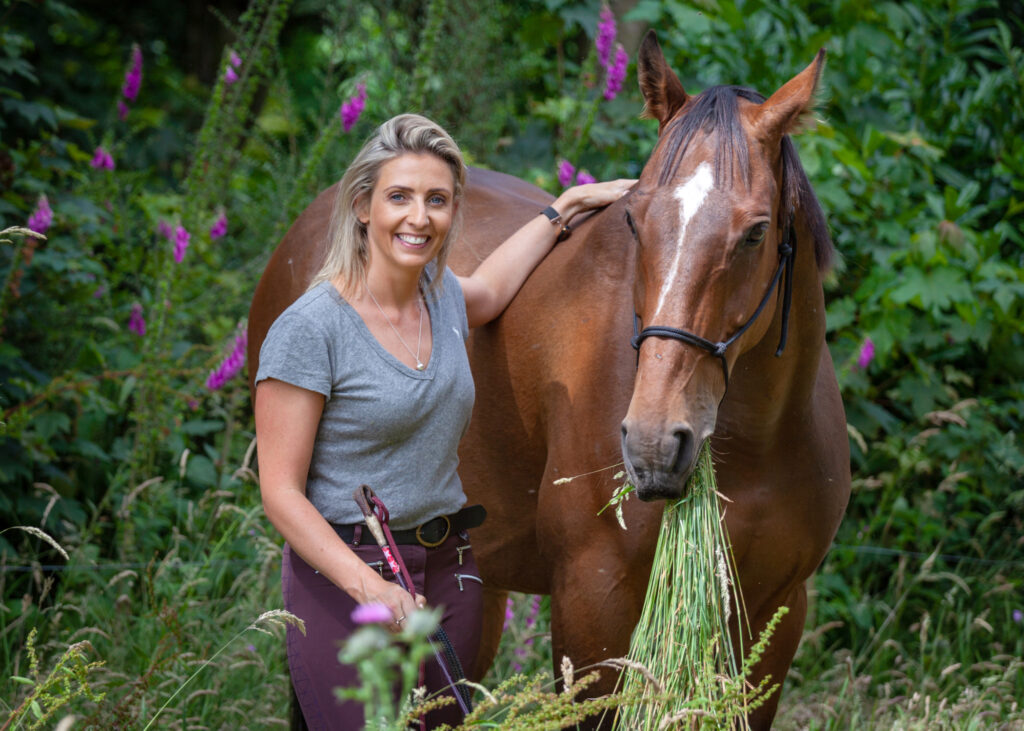
Client Experience
When I got my first horse, a 6-year-old Irish sports horse called Indie, I had no concept of confidence and why it would be essential to his continued development, and our lasting partnership.
On his classified listing he was advertised as great to shoe, box, mount, clip, hack, and ride in traffic, so why would confidence be an issue?
Unfortunately, it was an issue and due to this, I struggled to mount, needing him held tight while I jumped on. He napped when hacking and refused to go past machinery on the road, he took off when spooked by animals in a field. He had to be sedated to be shod, and the first time I saw him being loaded into a horsebox it involved a sweeping brush and three men shouting at him.
All this began to take a toll on my confidence and my ego, as I wondered if he was just “too much” horse for me.
Luckily through the natural horsemanship community and Helen’s guidance, I was able to start learning techniques and approaches that could help with all the issues Indie and I were having.
Firstly, I had to accept him for where he was at in his development. I had no idea about his previous experiences and how they had impacted him, but it was up to me to change his perception of the situations that scared him, to increase his confidence in his ability, and to trust in me as a leader. Little by little, by being aware of his thresholds and never pushing too far and too fast, his confidence grew, and now at just 10, he has become the most dependable horse in the yard!
Realistic Goals
I had to change my expectations of what were realistic goals for both of us and change my mindset to expect less. If I could not safely mount by myself, then mounting safely was the goal that day and my other plans had to be put on pause.
I set myself much smaller milestones to complete over the months focusing on groundwork, our relationship, and the basics that would keep me safe and grow Indie’s confidence. Bit by bit, the smaller goals started adding up to bigger accomplishments and I made sure Indie knew he was doing great, by rewarding him with breaks and praise for his efforts.
As I had more realistic goals, I was achieving, therefore I felt happier. Furthermore, Indie learned that he would be given time to work out problems, that he could make mistakes without repercussions and he would be rewarded for trying. I had created a safe learning environment for us both to thrive in.
Retreat & Approach
By exposing Indie to his fears in a slow and controlled manner, it allowed him to get curious and build up his confidence. When he spooked at a blue barrel in the arena, I did not push him close to it, instead would push it away from him. Eventually his fear turned to curiosity and when I would stop, he would come in further to try to touch it. For trailer loading, at home, I would work on him just taking a few steps into the box, building it up until he would happily stand in eating hay with the door open, so he never felt trapped. If he wanted to walk out, I would let him, and eventually, he did not try to come out so I would close the door. He trusted I would never ask too much therefor started offering more.
Groundwork and Patterns– We focused on groundwork and used patterns to build up his confidence. Each session we would do the same things consistently until he became comfortable and his whole disposition changed, blowing out, with his head lowered. 80% of our session was a routine with new things added in periodically. When new tasks were added, rather than get anxious, he began to problem solve and was able to think his way through new experiences. The groundwork helped our communication and his ability to see me as a dependable companion, therefore enhancing our relationship and his trust in me.
The change in techniques and mindset has altered our progress dramatically on the ground and in the saddle, and as we progress to more difficult challenges, such as lateral work or bridleless riding, we are unphased, as we now have the tools to work things out, realistic goals, and a safe environment to achieve results.
Mairead O’ Flynn
Conclusion
Regardless of whether your horse is more introverted or extroverted in nature, or what their life experiences have been they will benefit from merits of predictability, time & choice in their lives.
References
Peter, S. & Black, M. (2012) Evidence Based Horsemanship’, Kentucky, U.S.A., Wasteland Press.Vygotsky, L. S. (1978) ‘Mind in Society: The Development of Higher Psychological Processes. Cambridge, MA: Harvard University Press.
